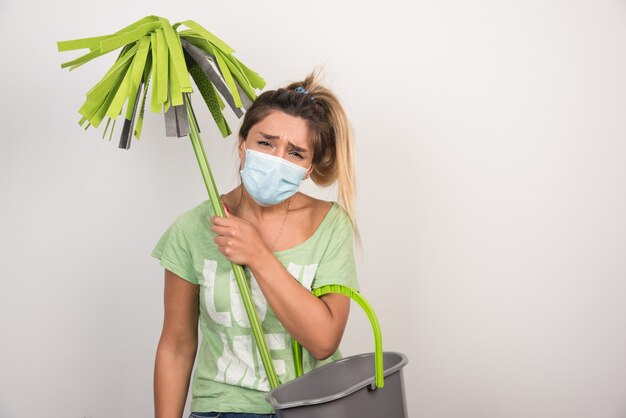Indoor air quality plays a crucial role in our health and well-being. With people spending a significant amount of time indoors—whether at home, work, or school—it’s essential to ensure that the air we breathe is clean and free of pollutants. Poor indoor air quality can lead to respiratory issues, allergies, and other health problems. Fortunately, there are effective ways to improve air quality and create a healthier living environment.
Common Indoor Pollutants
Before addressing solutions, it’s important to understand what might be polluting your indoor air. Some common indoor pollutants include:
- Dust and pet dander – These particles accumulate over time and can trigger allergies and respiratory problems.
- Mold and mildew – Excess moisture can lead to mold growth, releasing spores that can cause health issues.
- Chemical fumes – Cleaning products, air fresheners, and paints can emit volatile organic compounds (VOCs), which contribute to indoor air pollution.
- Smoke and cooking fumes – Tobacco smoke, wood-burning stoves, and cooking can release harmful particles into the air.
- Pollen and outdoor pollutants – These can enter your home through open windows and doors, affecting air quality.
By identifying these sources, you can take steps to reduce their impact and enjoy cleaner air indoors.
Effective Ways to Improve Indoor Air Quality
1. Keep Your Home Well-Ventilated
One of the easiest ways to improve air quality is to ensure proper ventilation. Open windows and doors regularly to allow fresh air in and pollutants out. If outdoor air quality is poor due to pollution or allergens, use exhaust fans in kitchens and bathrooms to help remove contaminants without introducing new ones.
2. Use Air Purifiers
Air purifiers with HEPA (High-Efficiency Particulate Air) filters can effectively remove dust, pet dander, pollen, and even some bacteria and viruses. Place them in high-traffic areas like bedrooms and living rooms to reduce pollutants.
3. Clean Regularly
A clean home is a healthier home. Regularly vacuum carpets and rugs using a vacuum with a HEPA filter to trap fine dust particles. Dust surfaces, wash bedding, and clean pet areas to minimize allergens. Additionally, mop floors and wipe down surfaces to prevent the accumulation of pollutants.
4. Control Humidity Levels
Excess humidity creates a breeding ground for mold and dust mites. Maintain indoor humidity between 30-50% by using dehumidifiers and air conditioners. Fix leaks promptly to prevent moisture buildup, and use exhaust fans when cooking or showering to reduce humidity.
5. Choose Natural Cleaning Products
Many conventional cleaning products contain harmful chemicals that contribute to indoor pollution. Opt for natural or homemade cleaners made with ingredients like vinegar, baking soda, and lemon juice. These alternatives are safer for both your health and the environment.
6. Avoid Synthetic Fragrances
Air fresheners, scented candles, and some household sprays release VOCs that can negatively affect air quality. Instead, use essential oil diffusers, simmer citrus peels on the stove, or place bowls of baking soda around your home to neutralize odors naturally.
7. Introduce Houseplants
Certain houseplants can help purify the air by absorbing toxins and releasing oxygen. Some of the best air-purifying plants include:
- Spider plant – Removes formaldehyde and carbon monoxide.
- Peace lily – Helps filter out toxins like benzene and trichloroethylene.
- Aloe vera – Absorbs airborne toxins and improves air quality.
However, be mindful of plant care to prevent mold growth from overwatering.
8. Ban Smoking Indoors
Tobacco smoke contains thousands of harmful chemicals that linger in the air and on surfaces. If you or someone in your household smokes, do so outdoors to prevent secondhand smoke exposure and maintain a healthier indoor environment.
9. Reduce Carpet and Upholstery Pollution
Carpets and upholstery can trap dust, pet hair, and allergens. Regular cleaning helps, but if possible, opt for hardwood or tile flooring, which are easier to clean and less likely to harbor pollutants.
10. Change Air Filters Regularly
HVAC systems and air conditioners are equipped with filters that capture dust and pollutants. It’s important to replace these filters every one to three months to maintain clean air and ensure your system runs smoothly. If you’re looking for enhanced air purification, consider upgrading to high-efficiency filters. If your system is old or in need of replacement, consider an AC system replacement in Pickerington, OH, for improved performance and air quality.
11. Be Mindful of Candles and Fireplaces
Burning candles and using fireplaces can release soot and pollutants into the air. If you enjoy candles, choose soy or beeswax varieties instead of paraffin-based ones, which release more harmful chemicals.
12. Keep Pets Groomed
If you have pets, regular grooming can significantly reduce pet dander and hair that contribute to poor indoor air quality. Bathe and brush your pets frequently, and wash their bedding regularly.
In Conclusion
Maintaining clean indoor air is essential for a healthier and more comfortable living space. By identifying common pollutants and taking proactive steps—such as improving ventilation, using air purifiers, and reducing chemical exposure—you can breathe easier and enjoy fresher air. Small changes can make a big difference in reducing allergens, toxins, and irritants in your home. Take the first step today and say goodbye to indoor pollutants for good!








Leave a Reply